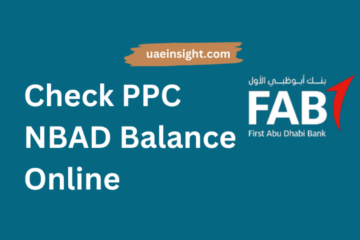Recruitment is not just about filling positions—it’s about building relationships, fostering connections, and creating a network of talented professionals who can contribute meaningfully to your organization.
In an increasingly competitive talent market, the power of recruitment communities cannot be overstated. When you can tap into a network of engaged, like-minded professionals, sourcing top talent becomes more efficient and effective.
The key to building and nurturing a strong recruitment community lies in understanding its role in the recruitment process, how to engage with potential candidates, and how modern tools like candidate tracking systems can help streamline and enhance your efforts. This article will explore how you can foster recruitment communities that not only make your hiring process smoother but also create long-term value for your organization.
Why recruitment communities matter
A recruitment community offers a unique advantage—access to a pre-engaged, highly targeted audience of professionals who are open to new opportunities, even if they’re not actively job hunting.
By building and nurturing recruitment communities, you create an ecosystem that not only gives you access to talent but also strengthens your employer brand and establishes long-term relationships with potential candidates. Here’s why these communities are so important:
1. They provide a consistent pipeline of talent
A recruitment community is essentially a talent pool that you can tap into whenever you need it. Whether you’re looking for immediate hires or thinking ahead for future recruitment needs, a strong community can provide you with a consistent stream of candidates who are pre-vetted, engaged, and familiar with your company.
This continuous access to talent is particularly valuable in industries with high turnover rates or sectors where niche skills are in short supply. By investing time in building relationships with community members, you reduce the time spent sourcing candidates and the effort required to assess them.
2. They foster a sense of belonging and trust
Recruitment is as much about human relationships as it is about skills and experience. A strong community creates a sense of belonging among its members, who often share similar goals, challenges, and values.
This connection breeds trust, which is essential for encouraging candidates to engage with your company. Candidates are more likely to respond to outreach if they feel connected to your organization and believe that you genuinely value their contributions.
Moreover, recruitment communities provide an opportunity for companies to position themselves as employers of choice. When candidates feel like they belong to a community, they are more likely to recommend it to others or even apply when the time is right.
3. They enable long-term relationship building
Nurturing recruitment communities allows you to build long-term relationships with potential candidates. Unlike transactional hiring, where candidates are approached only when a position opens up, community building ensures that you stay top of mind with talented professionals who may be a fit for future roles.
Engaging with candidates in a non-transactional way makes them more likely to respond positively when you eventually reach out about an opportunity.
By interacting with your community through discussions, webinars, newsletters, and social media, you keep the relationship warm, ensuring that when the time comes to recruit, you’re not starting from scratch.
4. They increase candidate engagement and retention
Recruitment communities are not just for finding candidates—they’re also an excellent tool for maintaining engagement with your existing talent pool. With regular updates, content sharing, and personalized communication, you can keep candidates informed about your organization’s activities and job openings. This ongoing engagement helps ensure that candidates remain connected to your company and engaged with your recruitment process.
How to build a recruitment community
Building a recruitment community isn’t something that happens overnight. It requires consistent effort, strategic planning, and the right tools to succeed. Here’s how you can start building and nurturing a recruitment community that attracts high-quality talent.
1. Define your community’s purpose and values
The first step in building any successful community is to define its purpose and core values. What are you hoping to achieve with your recruitment community? Are you looking for a network of candidates with specific skills, or are you focused on building an inclusive space for professionals in your industry? Define your community’s goals clearly so that you can attract candidates who align with your company’s values and mission.
2. Use the right platforms to engage
The platform you choose to build your recruitment community on is essential. While social media platforms like LinkedIn, Facebook, and Twitter offer large audiences, private communities on tools like Slack, Discord, or a dedicated forum can help create a more intimate and focused space. These platforms provide opportunities for regular interaction, direct communication, and easy access to resources.
You can host webinars, Q&A sessions, virtual career fairs, and other interactive events to keep your community engaged and provide value. Regularly sharing content like job updates, industry trends, and career tips keeps your community members involved and informed.
3. Offer value and share knowledge
Building a community isn’t just about broadcasting your job openings. To maintain engagement, provide value to your members. Share industry insights, offer professional development opportunities, host learning sessions, and provide exclusive access to job alerts.
The more value you provide to community members, the more likely they are to stay engaged and recommend the community to others.
4. Leverage your candidate tracking system
A candidate tracking system (CTS) can help you manage and streamline your community-building efforts. A CTS allows you to track interactions with candidates, store resumes, and manage your communication history, all in one place. This level of organization is essential when dealing with large communities, as it ensures that no lead is forgotten and that you can easily reach out to candidates when a relevant opportunity arises.
Using your CTS to maintain detailed profiles of community members helps you segment your outreach efforts, personalize your communication, and keep track of your progress over time. It also helps you identify trends within your community, such as the types of candidates most actively engaging, and tailor your community-building efforts accordingly.
5. Foster engagement through active communication
Constant communication is key to building an engaged and vibrant recruitment community. Encourage open discussions, ask for feedback, and highlight the accomplishments of community members. Actively create space for members to share their thoughts, experiences, and expertise. By fostering a sense of collaboration and camaraderie, you’ll create an environment where candidates feel comfortable contributing and engaging.
You can also use email newsletters to share updates about your company, industry news, or job openings. This keeps your community members in the loop and reinforces your brand as an active and relevant presence in their professional lives.
The role of recruitment communities in better talent acquisition
Strong recruitment communities do more than just streamline your hiring process—they help you attract, engage, and retain the best talent over the long term. By investing in a recruitment community, you are building a network of professionals who are already aligned with your company’s mission, culture, and values. When the time comes to hire, you can rely on your community to provide pre-vetted, highly qualified candidates who are more likely to be a good cultural fit.
Building and nurturing recruitment communities is an effective strategy for improving talent acquisition in today’s competitive job market. These communities not only provide a consistent pipeline of candidates but also foster trust, engagement, and long-term relationships.
By integrating the right tools, such as a candidate tracking system, and offering real value to your community members, you can create a talent network that helps you attract the best candidates, fast.
Investing time and resources into community building is an investment in your company’s future growth and success. By fostering relationships with candidates and offering value beyond the hiring process, you create a talent ecosystem that will continue to benefit your organization for years to come.


0 Comments